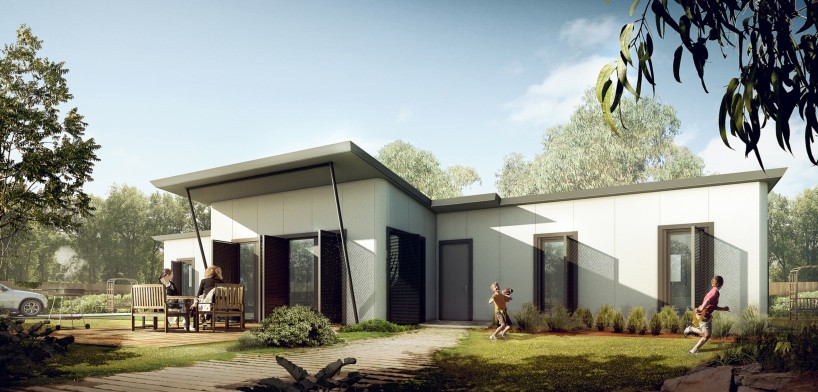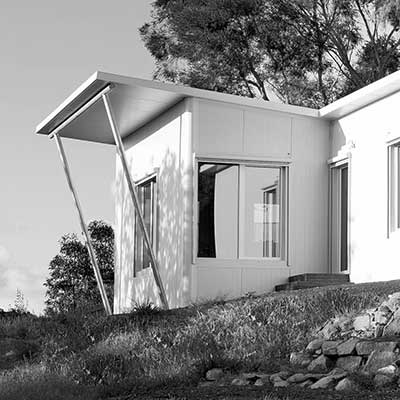 You can't tell by looking whether a Passive House Certificate has been obtained
You can't tell by looking whether a Passive House Certificate has been obtained Without a passive house certificate, it’s just a passive house. Or is it?
The topic of the “passive house certificate” is an interesting one to talk about.
I was pleased to be informed that I was invited for the second time to present at the International Passive House Conference. This one was in Munich, 2018.
Below is the abstract I submitted. I didn’t end up going, due to work commitments, but it is always useful to think about what you would want to say to an international audience. Sometimes Australia seems so far away from Europe, and you wonder if what you have experienced in the world of Passive House is relevant elsewhere.
When developing our innovative build system (which is patented internationally), we ensured that we aimed for certification. We found that it was invaluable in driving the process towards success, even though it was challenging as well.
Certificates are unpopular
Certificates are sometimes treated as a unnecessary label, and other times like a necessary evil. People complain about them, ignore them, and dismiss them. People, even architects and designers, can claim that they are irrelevant. Certificates can be resented and feared as a barrier to entry.
The Passive House Standard requires certificates. Sometimes for building components. Other times for designers. At all times for the building itself. The physical building as built and tested.
This list of certificates makes it more difficult to achieve the Standard.
But Certificates test compliance with a Standard
But, after all, it is a standard. It is not just a warm and fuzzy feeling (although it is that and much more).
Certificates for components can be hard to obtain. And in many countries you cannot get certified components at all.
Certificates for designers are hard to obtain. And while certified designers may exist, they may not have actually designed a certified passive house. Newly qualified designers do not have “runs on the board”.
And certificates for buildings are hard to obtain too. The process is so rigorous and laborious, from design stage to building stage to completion and testing. You can do everything well until the end, and fail the blower door test. What a disappointment that can be for all involved.
Because the certificates are hard to obtain, people find ways of dismissing their relevance. They can see the benefits of the Passive House Standard, but they can’t obtain them. So they start to appropriate the terminology of the International Passive House Institute and claim that their inferior buildings are equivalent. They call their buildings “passive house” buildings. And members of the public do not know the difference.
Are solar panels enough?
In some countries like Australia, people are confused by solar panels, because salespeople claim they represent sustainability. And they might be cheap and easy to instal. So people claim their houses are “net zero” ie better than passive, simply by adding a few solar panels to the roof. The customer may end up paying no power bills, so they are relatively happy, not knowing that the Passive House Standard could have produced so much more. Because of ignorance in this field, and salespeople who are keen to sell their products and services, you can easily lose the potential benefits of certification.
Sometimes people think that they can tack on or add on a certificate to a good quality building. But the road to certification is long and paved with obstructions. Without a certification aim, their design, insulation, connection details, windows, and ventilation will be sub-standard.
A certificate for a passive house building is not just a ticket. It is the result of a complex, rigorous process with commitment from all involved.
Certification makes a massive difference to the end product, the comfort for users, the existence of drafts, condensation and mould, and the power consumption.
For those who understand the Passive House Standard, we need to explain to consumers what it means. Perhaps explaining it will help people to choose true Passive House, instead of a poor alternative.”
Why aim for a certificate?
With the Superpod® system, we aim for certification every time. We are not content to stop when architectural lines are on a page. We are happier when our passive house building has been finished, tested, and certified. So it is good to aim for that “ticket” at the end of this rigorous process, the passive house certificate.
What do you think?
Do you think solar panels and timber linings make a building sustainable?
Do you think any building with passive house elements can be called a Passive House?
If you have obtained a passive house certificate, don’t forget to share with others how significant is your achievement.





